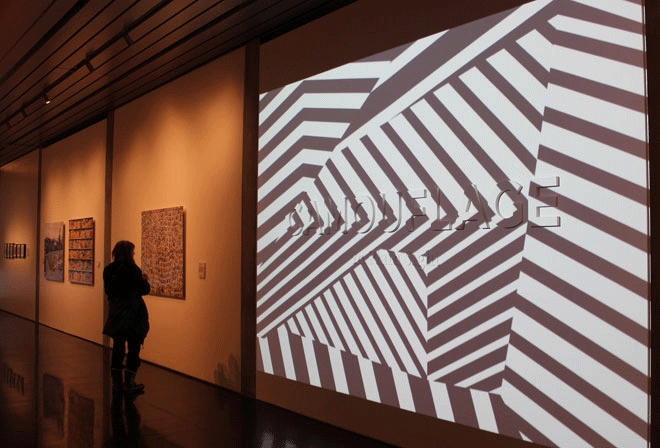Now on Display through Feb 5, 2017
A thought-provoking exhibit at the Anchorage Museum
Story & photos by Melissa Norris
The emotional power of art is healing and inspirational, and heading into our busiest time of the year, I sought refuge at the Anchorage Museum for an hour of thoughtful observation.
Walking into the first gallery I spotted the opening image for Camouflage: In Plain Sight and I began to understand why the museum’s website says the exhibit “exposes the ancient, yet modern, art of concealment.” The sign simply states “Camouflage” against a background using the random, black-and-white, razzle-dazzle pattern of military camouflage from World War II.
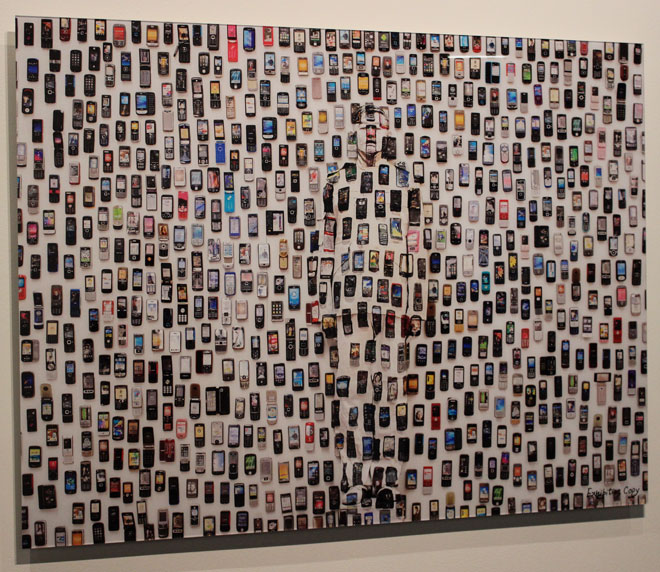
Liu Bolin Hiding in the City-Mobile Phone
The exhibit begins with modern-art photos Liu Bolin Hiding in New York-No 8 Cereal and Liu Bolin Hiding in the City-Mobile Phone. Also on loan is Liu Bolin’s Hiding in New York No. 6- Intrepid, 2012. The technique of artist Liu Bolin painting his body to blend right into the background of his photos is his way of communicating a deeper message about humanity and how he earned the nickname the “Invisible Man.”
The exhibit begins with modern-art photos Liu Bolin Hiding in New York-No 8 Cereal and Liu Bolin Hiding in the City-Mobile Phone. Also on loan is Liu Bolin’s Hiding in New York No. 6- Intrepid, 2012. The technique of artist Liu Bolin painting his body to blend right into the background of his photos is his way of communicating a deeper message about humanity and how he earned the nickname the “Invisible Man.”
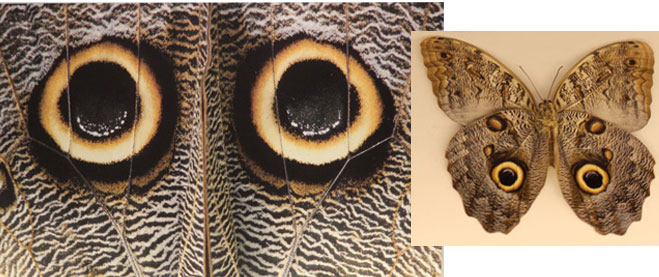
The giant owl butterfly.
Moving into the next gallery the origin of camouflage is depicted by the first masters of disguise. Take a look at animals and insects that live by camouflaging themselves from predators. Get a close-up look at the giant owl butterfly and the orchid mantis through photos and specimens. See live cuttlefish as they swim about and conceal themselves, mimicking their backgrounds when you approach.
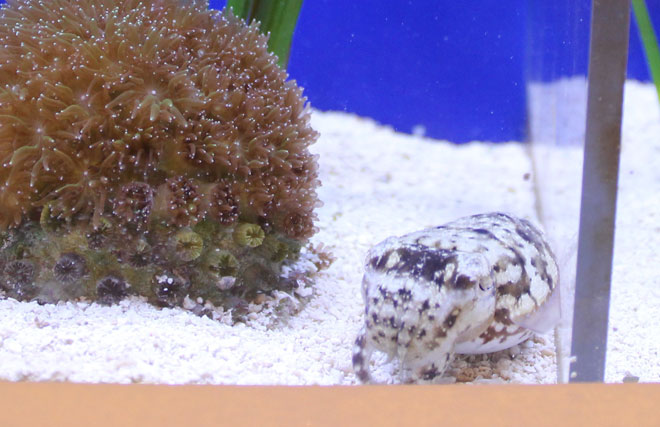
Cuttlefish are cool!
The third gallery is where you find the use of military camouflage as adapted over the last century. You may have noticed the inflatable camouflage tank outside the museum’s west entrance that would appeal to many Alaskans as lawn art, but was used in war to deceive enemies. You’ll see a second inflatable tank inside the exhibit as well as the motion detecting “T-1151 Dog Doo Transmitter” used by the military and the CIA in the Vietnam War to monitor shipments and locate soldiers in need of help. View a full-fledged ghillie suit originally developed in Scotland to hunt in a blind and later adopted by military snipers. See a variety of camouflage patterns such as the chocolate chip camouflage pattern and the tigerstripe, as well as photos from the different eras showing those camouflage patterns in use.
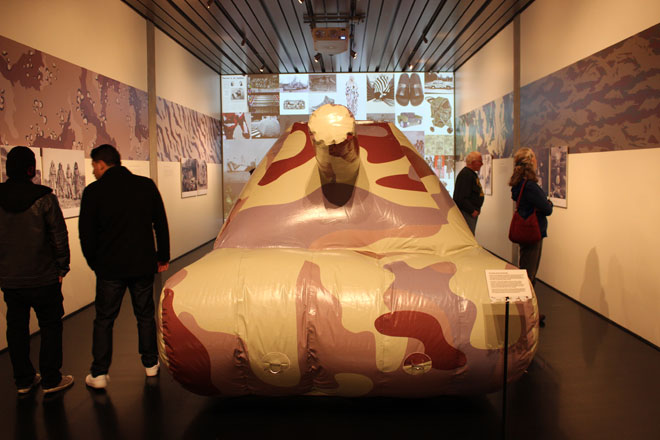
The military used camouflage inflatable tanks to deceive enemies.
Next step into a special section of the exhibit where you first see a sock-monkey “Soundsuit” by famous mixed-media artist Nick Cave, who builds these incredible suits to conceal the identity of the wearer including details like gender, race, and class. Then marvel at one of the largest camouflage paintings by pop-art icon Andy Warhol, who began exploring camouflage in his art in 1986 because it allowed him to work with both an abstract pattern and a recognizable image.
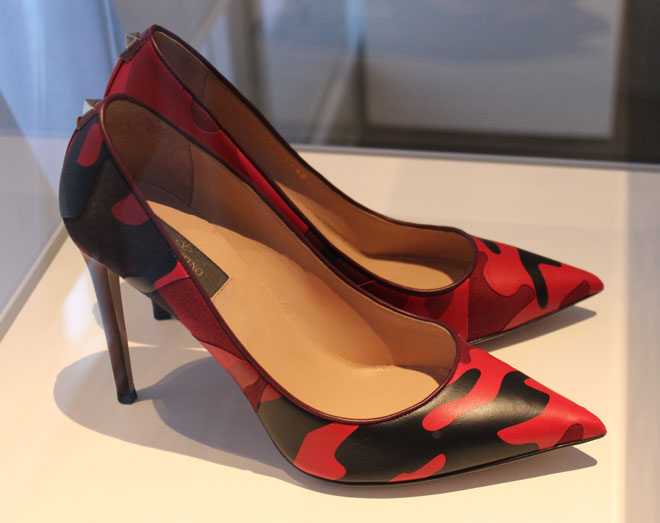
I need these.
One of Warhol’s camouflage prints was used by fashion designer Stephen Sprouse to create a line of camouflage clothing, which has become a common concept in modern fashion. Nowhere does it seem camouflage is more common in day-to-day fashion than in Alaska and the Anchorage Museum thought to incorporate that concept in their exhibit by showing the use of camouflage in haute couture with Valentino and Minolo Blahnik camouflage heels that would rock at the Safari Club banquet next month. On display are a vintage, high-fashion camouflage silk beaded dress by Parisian design house Balmain and a contemporary dress by Japanese designer Junya Watanabe and a small section on makeup as a way to hide ourselves.
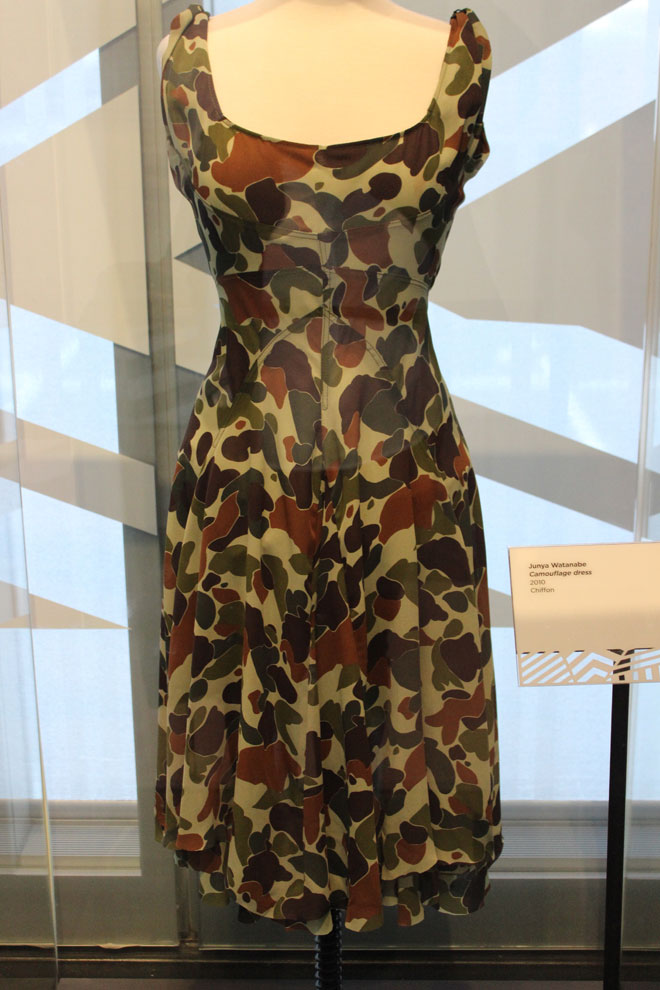
Camouflage can be regularly found in fashion.
The next part of the art display is the hunter’s use of camo, and in particular, hunters from the Far North, with a highlight on winter camo. See a beautiful handcrafted Bentwood hunting hat from the Alutiiq culture shaped like a pointed piece of ice that dually served to mask seal hunters in white kayaks against the sea and shield the hunter’s eyes from the sun, the spray of the water and ice glare.
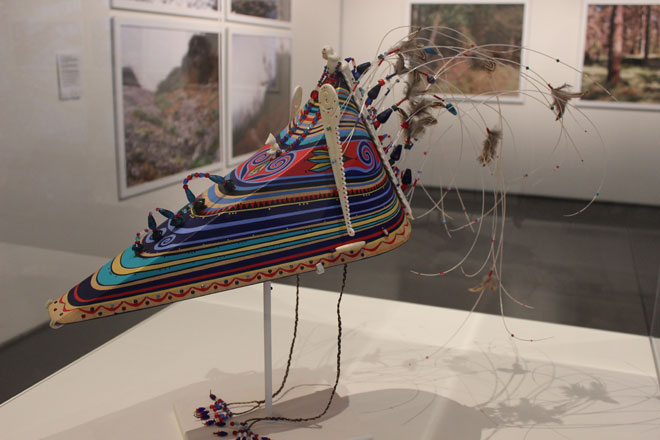
Alutiiq Bentwood hunting hat.
Towards the end of the exhibit is the Simon Menner Sniper Series featuring six photos of natural landscape with camouflaged snipers you can barely find even with the directions provided on the sign.
A final piece of wearable art known as the paparazzi scarf concludes the exhibit. Meant to conceal the faces of celebrities when a flash photo is taken by cell phone, the “Cloaking Scarf” by Saif Siddiqi is a functional use of camouflage in today’s modern world.
Riding downstairs in the west elevator that hosts live music hosted on First Fridays at the Anchorage Museum each month, I thought back years ago to a time we had taken my nephew Charlie to the Imaginarium Discovery Center inside the museum. I immediately remembered I need to buy a family membership to the museum because my 2 ½-year-old daughter needs this culture and exposure as much as we do. What an incredibly valuable resource to Alaska’s families and visitors, in addition to it being a healthy activity that is fun and out of the weather. It’s literally tens of thousands of square feet of learning for you and your kids.
You have another month to check out Camouflage: In Plain Sight at The Anchorage Museum, as it is on display until February 5. Take an hour or two for some deep thought, and make sure to check out a family membership while you are there.
####
Melissa Norris is the Publisher of Fish Alaska and Hunt Alaska magazines.

